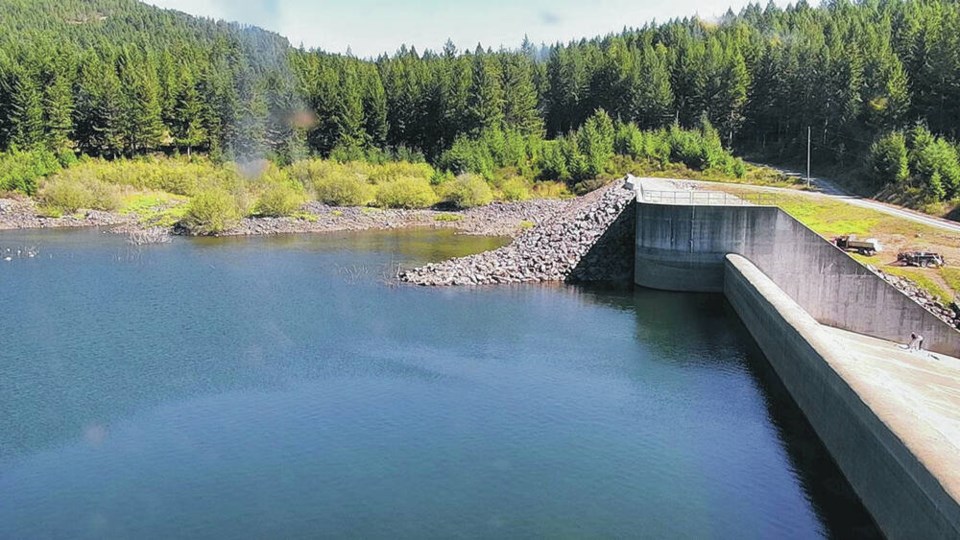Despite the fine efforts of local and provincial governments to address climate change, the warming is continuing to occur. The latest reports suggest atmospheric carbon dioxide is now more than 415 parts per million and will continue to increase.
Our emissions reductions efforts are laudable but a drop in a very large bucket compared with increasing emissions in other, more populous places in the world.
Since the warming will continue, our best hope is to learn how to adapt to it.
It’s coming, no matter what we do.
The changes we are seeing in our climate have long been predicted: less settled weather, more fierce storm events and more moisture in the cool months when we don’t really need it, and much less moisture in the warm months when we really do need it.
This is what we have to adapt to.
Of the changes coming, many are out of our control. We don’t control rain or big storm events, heat domes or long periods with no rain. Of the things we can control, surface water is perhaps the most important.
In the coming years, it will be necessary to change our ways of thinking about water management, in order to adapt to changed realities due to a warming climate.
Let’s think about dams on rivers for example. Dams are not popular and seen as environmentally destructive. Opposition to dams on the Peace River for example, is intense. But as the climate warms, and snow-pack at higher elevations thaw earlier in the season, if snow falls at all, we will see two drastic effects.
These are lower late summer flows and higher water temperatures. We are seeing this already in the lower Fraser River. The result will be inhospitable conditions for aquatic life, including migrating and spawning salmon, which are already at historically low numbers.
The question is, how do we retain water in these watersheds long enough to feed flow slowly, as would happen if snow-melt was retained longer at higher elevations?
And the priority would be to achieve flows that support aquatic life, and not necessarily meet demands for hydro electricity. It seems to me that, at some point, more storage in upper watersheds will be necessary to hold back flows to help prevent dangerously low flows during critical periods in the fall.
Making this adaptation will not be easy, as storage reservoirs involve raising dams or building new ones.
Consider the Cowichan River situation in which extremely low late season flow has caused local people to actually put salmon in trucks to take them upstream. Increasing the storage in Cowichan Lake will flood shoreline infrastructure, and that will not be popular. The need to make this trade-off is getting more acute.
Let’s think about forests. For more than 100 years, the principal product from our forests has been wood; lumber and fibre. But water is a forest product, and may indeed become the principal forest product needed by communities, wildlife and aquatic life.
Forests soak up water and release it slowly. Trees transpire vast amounts of water back into the atmosphere. And they help moderate water temperatures with shade. If more rain is coming in the cold season, then we need more forest, not less.
We will need to retain forest on slopes and in valley bottoms. Forests not only release water more gradually, but they also help dampen flows during extreme events.
Less flooding is a side benefit of retaining the services of forests as water reservoirs. But a change in the way we think about forests is needed in order to take full advantage of these services.
Clear-cutting forests has the hydrological effect of steepening the gradient of the streams in that forest; water drains out more quickly and there is more water because trees are not transpiring it.
Stream flows decline earlier in the warmer months. The time between a big rain event and an increased flow shortens. Peak flows are higher. Low flows are lower. More sediment, gravel and stones move downstream. Banks erode. Roads and neighbourhoods flood. Water that should be retained in the watershed is lost.
Managing forests for water will force us to rethink forest harvesting practices. Thankfully, knowledge emerging from long-term experiments such as the Date Creek Research Forest near Hazelton show us that there are alternatives to clearcutting that sustain multiple benefits, including water. Changing our mindset about how to manage forests, and for what products, is a transition that should be started now; it will not get any easier later.
Lastly, we must re-consider our own domestic management and use of water. We will need to encourage more infiltration and less run-off, as more rain and major storm events put stress on sewer and drainage infrastructures.
We can plant more trees. We ought now to be considering reducing domestic use by installing water efficient fixtures and fittings in our homes, offices, schools and government buildings. We will eventually be forced through water use restrictions to cut down on watering lawns and gardens, and shift to less water-hungry landscaping, if any. The use of drip-irrigation systems may become mandatory.
The sooner we implement these adaptations voluntarily, the less painful they will be when we have to. A community that is more resilient to a warming climate will be able to protect itself when it gets too much water, and also when it gets far less water than it wants.



